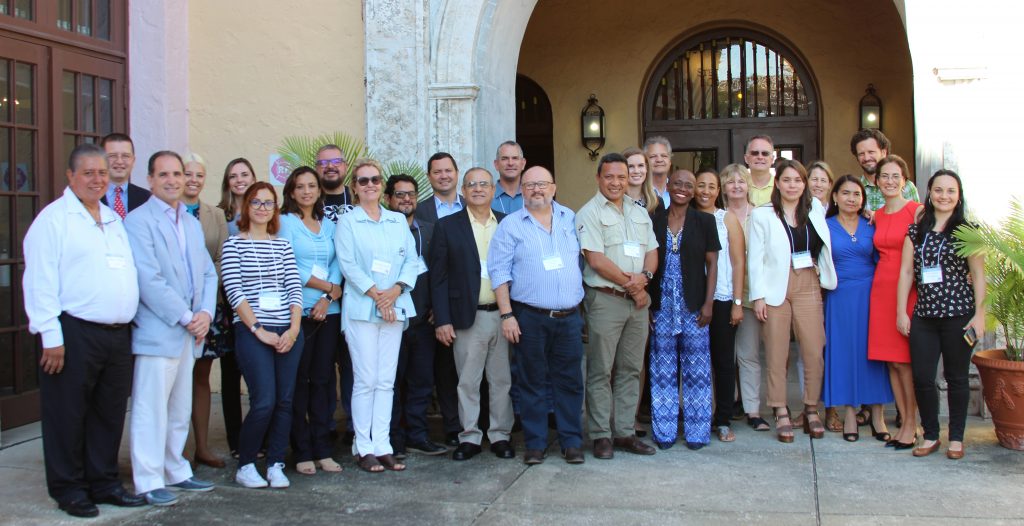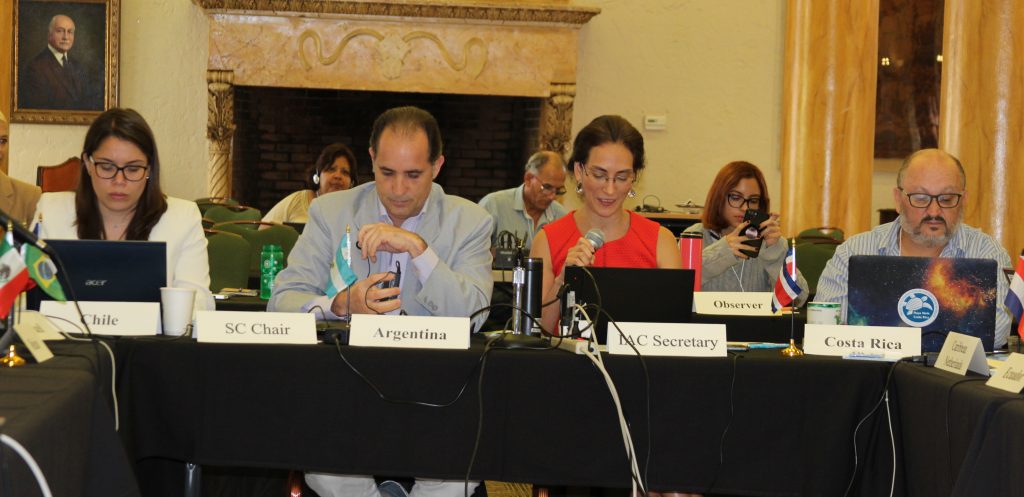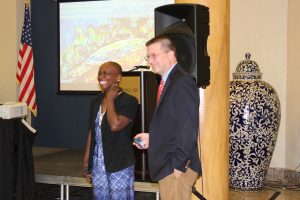Stetson Law hosted international meeting on sea turtle conservation

By Molly Kaelin
Stetson College of Law had the honor of hosting the most recent meeting of the Scientific Committee of the Inter-American Convention for the Protection and Conservation of Sea Turtles (IAC) in September.
The IAC is an international treaty that seeks to create balance between national interests, regional customs, and international sea turtle conservation efforts. It was created in 1994 by a group of coastal nations from North, Central, and South America to reduce regional sea turtle threats. Under the treaty, member states have a legal framework within which to act on behalf of sea turtle populations. Today the IAC has 16 member states comprising Argentina, Belize, Brazil, Chile, Costa Rica, The Dominican Republic, Ecuador, Guatemala, Honduras, Mexico, The Netherlands, Panama, Peru, the United States, Uruguay, and Venezuela.
The IAC uses data and education – while being mindful of each member state’s environmental, socioeconomic and cultural characteristics – to protect sea turtles and their habitats, as well as help recover turtle populations.
IAC efforts are focused on the entire life cycle of sea turtles. The Treaty forbids the capture of sea turtles, their shells, or their eggs. Restrictions are also placed on human activities that may adversely affect sea turtles during their reproduction, incubation and migration stages.

“Nesting beaches are much easier to protect than open oceans,” said Veronica Caceres, IAC’s secretariat.
A Nicaraguan native, Caceres holds a master’s in fishery and began working with sea turtle conservation in Central America early in her career. One of the conservation techniques she focuses on is the Turtle Exclusion Device, or TED. She explained that the TED is put inside of shrimping nets and prevents accidental sea turtle capture, leading to a reduction in turtle deaths.
Other conservation efforts include restoring and conserving habitats, designating protected areas, supporting research aimed at reproduction, breeding and re-introduction, fostering relationships with governmental institutions, NGOs and the public at large, and reducing the impact of fishing on sea turtle populations.
Film examines tension between humans and wildlife
As part of the three-day meeting, IAC played the film, “Cacu: Un Cambio por la Vida” (Cacu: A Change for Life) by Director/Journalist Marvin Del Cid and Marine Biologist Omar Shamir Reynoso. The film explores the tension between the human need to make a living and the value of protecting the environment. The documentary follows Reynoso as he works with five Santo Domingo fishermen to protect sea turtle nests in Santo Domingo.
Caceres said this tension is one of the key challenges they face in getting communities to participate in conservation efforts. They often get pushback from locals.
“It’s often their livelihood,” she said, referring to egg poaching, “so you have to approach it with the right attitude.”
Caceres makes it a priority to understand community needs and the reasons why sea turtle eggs are poached.
“Only after we understand why, can we think about how to educate and encourage them to change. It is important the community is recognized for their efforts.”

One way to encourage local populations is through finding other avenues of income that depend on a flourishing environment, such as tourism. Sometimes communities can be incentivized for undertaking and closely monitoring conservation efforts. For example, a community may receive funding for new schools or even stipends in exchange for monitoring the sea turtle populations and preventing egg poaching.
IAC members aim to improve turtle mortality rate by increasing the number of communities who monitor sea turtle population trends. They also are focused on mitigating the impact of plastic pollution and climate change on sea turtles.
“As climate change worsens, beach sand becomes hotter. This means the incubation temperature becomes greater and, since incubation temperature determines the sex of the turtles, more female turtles will be born,” Caceres explained, “without males, sea turtle species will not survive.”
The organization also wants to add more signatories to the treaty, including El Salvador, Columbia, and Canada.
Stetson’s role creates opportunity for students
Stetson College of Law is an Accredited Observer of the IAC, meaning Stetson representatives have the privilege of observing and hosting IAC meetings. Other accredited observers include NGOs and scientific institutions.
Stetson Law’s own Kate Welch served as the rapporteur, recording the minutes of the meeting. Welch took this role because of her interest in large international treaties that make positive environmental impact.
“It is interesting to see how a multilateral agreement operates when everyone gets together. Here you have scientists, lawyers, and policy makers creating new policies and reviewing existing ones,” Welch said, adding, “the lawyers are kind of the go-between. That’s the exciting part.”
Lawyers are not only the go between for scientists and policymakers at the convention, but for the IAC and other treaties such as the UN Convention on the Law of the Seas (UNCLOS). They play an important role in the process of finding what works for their countries while complying with overarching treaties. Welch also enjoyed watching interactions between NGOs, the U.S. State Department, and the National Oceanic and Atmospheric Administration (NOAA). With so many players and moving parts, there are many spaces in which lawyers can, and should, be involved.
“This convention is like our own nesting beach,” Caceres said. “Strength is lacking in our world for those that can’t advocate for themselves. Scientists sometime lack the words to inspire passion and lawyers have a better way with words, especially when speaking to world leaders. Lawyers can inspire magic in the heart.”
Stetson’s Institute for Biodiversity Law and Policy serves as an interdisciplinary focal point for education, research and service activities related to global, regional and local biodiversity issues, making it a great partner and host facility for the IAC. Royal C. Gardner, Professor of Law and Director of the Institute said IAC members are interested in discussing a memorandum of understanding with Stetson Law to continue the collaboration, which could lead to some great opportunities for students.
Post date: Nov. 7, 2019
Media contact: Kate Bradshaw
[email protected] | 727-430-1580
